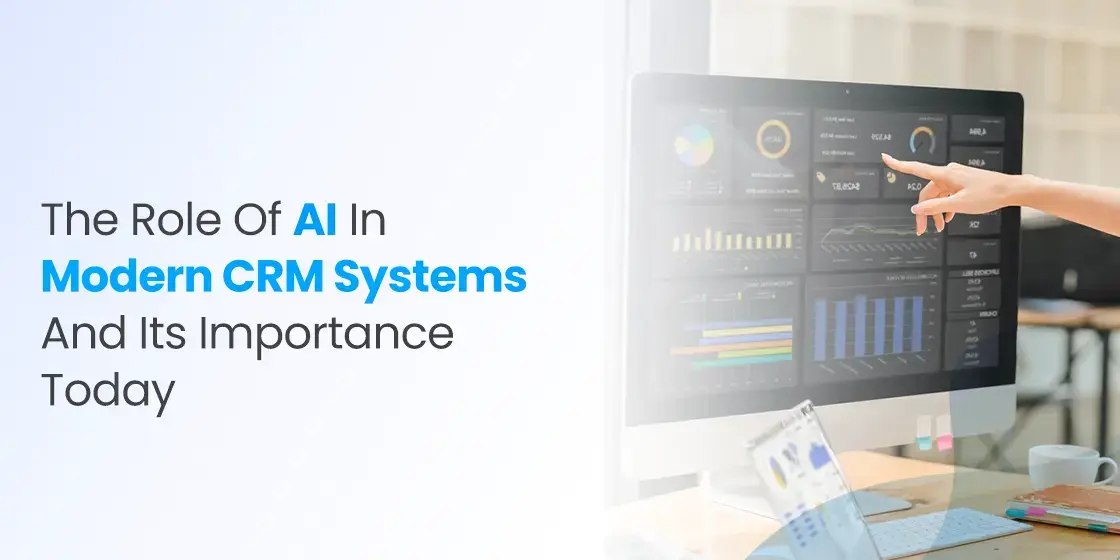Table of Content
Discover How the Top Web Technologies Help Us Power Through Today
The digital landscape we navigate daily is built upon a complex foundation of web technologies that work seamlessly together to deliver the experiences we often take for granted. From the moment you open a browser to check your email, scroll through social media, or shop online, you’re interacting with dozens of different web technologies working in harmony behind the scenes.
These technologies have evolved dramatically since the early days of static HTML pages, transforming the internet from a simple information repository into a dynamic, interactive platform that powers our global economy and connects billions of people worldwide. Understanding these foundational elements not only helps developers create better digital experiences but gives users insight into the invisible architecture shaping our online lives.
In 2025, web tech continue to evolve at an unprecedented pace, with artificial intelligence, progressive web apps, and enhanced accessibility standards reshaping how we build and interact with digital platforms.
As we’ll explore throughout this article, staying current with these innovations isn’t just beneficial. It’s essential for creating competitive, inclusive web experiences in today’s rapidly changing digital environment, competing with the top web development services today.
The Core Trio: HTML, CSS, and JavaScript

At the heart of web development lies a powerful triumvirate of technologies that form the backbone of virtually every website and web application. HTML (Hypertext Markup Language) provides the structural foundation, CSS (Cascading Style Sheets) handles presentation and styling, while JavaScript enables dynamic interactivity.
HTML serves as the skeleton of web pages, organizing content into a logical structure through elements like headings, paragraphs, images, and links. Since its introduction in 1993, HTML has evolved through multiple versions, with HTML5 introducing semantic elements that better describe content purpose, such as <article>, <section>, and <nav>, improving accessibility and search engine optimization.
CSS transforms the raw HTML structure into visually appealing designs by controlling layout, colors, typography, and responsive behavior across different screen sizes. Modern CSS has grown to include powerful features like Grid and Flexbox for complex layouts, animations, and variables, enabling sophisticated designs that were once impossible without images or JavaScript.
The Evolution of JavaScript
JavaScript has undergone perhaps the most dramatic transformation of all web technologies. Originally created in just 10 days in 1995 as a simple scripting language for basic interactivity, it has evolved into a robust programming language that powers everything from simple form validation to complex single-page applications.
The introduction of frameworks and libraries like React, Angular, and Vue.js has revolutionized how developers build interactive interfaces, enabling component-based architecture and more efficient code management. Meanwhile, Node.js brought JavaScript to the server side, allowing developers to use the same language throughout the entire development stack, and also shifted the balance towards the latter in static vs dynamic websites.
This evolution has transformed JavaScript from a supplementary technology to the primary driver of modern web experiences, handling everything from animations and user interactions to data fetching and state management across complex applications.
Backend Technologies and Server-Side Processing

While frontend technologies create what users see and interact with, backend technologies power the logic and data processing behind the scenes. These server-side technologies handle everything from database interactions to authentication and business logic implementation.
Popular backend languages and frameworks include Python with Django or Flask, Ruby on Rails, PHP with Laravel, Java with Spring, and C# with ASP.NET. Each offers different strengths and trade-offs in terms of performance, scalability, and developer experience. The choice of backend technology often depends on specific project requirements, team expertise, and integration needs.
Modern backend development has increasingly embraced microservices architecture, breaking applications into smaller, specialized services that can be developed and scaled independently. This approach offers greater flexibility but introduces challenges in service communication and deployment complexity.
Databases and Data Storage
Web technologies rely heavily on efficient data storage and retrieval systems. Relational databases like MySQL, PostgreSQL, and Microsoft SQL Server organize data into structured tables with defined relationships, while NoSQL databases like MongoDB, Redis, and Cassandra offer more flexible schema designs for certain use cases.
The choice between relational and NoSQL databases depends on factors like data structure, scalability requirements, and query patterns. Many modern applications use multiple database types in combination, selecting the right tool for specific data storage needs within the same system.
Cloud-based database services have simplified database management by offering managed solutions with automatic scaling, backups, and high availability, reducing the operational burden on development teams while improving reliability.
Looking for an experienced development team to manage your software projects? Get in touch with us now and hire skilled teams for your project.
Build My TeamAPIs and Web Services
Application Programming Interfaces (APIs) serve as the communication bridges between different web technologies and services. RESTful APIs have become the standard protocol for exchanging data between systems, while GraphQL offers more flexible querying capabilities by allowing clients to request exactly the data they need.
Web services enable popular web app examples to leverage functionality from external providers without implementing it themselves. From payment processing and authentication to machine learning and analytics, web services allow developers to build sophisticated applications by combining specialized tools and platforms.
The proliferation of APIs and web services has fueled the growth of the API economy, where businesses offer their capabilities as services, creating new business models and opportunities for innovation through technology composition rather than building everything from scratch.
Cloud Computing and Infrastructure
The shift from on-premises hosting to cloud computing represents one of the most significant transformations in web technologies. Cloud platforms like AWS, Microsoft Azure, and Google Cloud provide scalable, on-demand infrastructure that adapts to changing requirements without the need for physical hardware management.
Infrastructure as Code (IaC) tools like Terraform and CloudFormation allow developers to define and provision infrastructure through code, making deployment more consistent and reproducible. Container technologies like Docker package applications with their dependencies, ensuring consistent behavior across different environments.
Serverless computing takes abstraction further by allowing developers to focus entirely on code without managing servers, automatically scaling based on demand and charging only for actual resource usage. This approach simplifies deployment and reduces operational overhead for many web applications, and allows easy access to outsource web development.
Progressive Web Apps and Modern Web Capabilities

Progressive Web Apps (PWAs) represent the convergence of web and native application capabilities. By implementing service workers, manifest files, and responsive design, PWAs offer offline functionality, push notifications, and home screen installation while maintaining the accessibility of web applications.
Modern web APIs provide unprecedented access to device features once restricted to native apps. Web applications can now access cameras, microphones, geolocation, Bluetooth, and even augmented reality capabilities directly through the browser, blurring the line between web and native experiences.
These advancements have made the web platform increasingly viable for applications that previously required native development. And it does so by offering broader reach and simpler deployment while providing rich, engaging user experiences across devices. This has resulted in a rising popularity of quality PWAs in today’s market.
Web Security Technologies
As web applications handle increasingly sensitive data and functionality, security technologies have become critical components of the web ecosystem. HTTPS encryption protects data in transit, while Content Security Policy (CSP) prevents cross-site scripting attacks by controlling which resources a page can load.
Authentication technologies have evolved from simple username/password combinations to include multi-factor authentication, OAuth for third-party authorization, and emerging passwordless methods using biometrics or security keys. These approaches improve security while reducing friction in the user experience.
Security tools like web application firewalls, vulnerability scanners, and penetration testing frameworks help identify and mitigate potential vulnerabilities before they can be exploited. The growing emphasis on “shift-left” security practices integrates security testing earlier in the development process, catching issues before they reach production.
Web Accessibility in 2025: Standards and Compliance

Web accessibility has evolved from a recommended practice to a legal requirement in 2025, with significant regulatory changes transforming how digital experiences are built and maintained. The European Accessibility Act (EAA), which came into force on June 28, 2025, represents one of the most substantial shifts in accessibility regulation, setting minimum accessibility requirements for a wide range of products and services across the European Union.
Similar to how GDPR reshaped global privacy practices, the EAA impacts organizations worldwide that conduct business with European markets. The Act requires websites, mobile applications, e-commerce platforms, banking services, and e-books to conform to WCAG 2.2 Level AA standards, ensuring they are perceivable, operable, understandable, and robust for all users, including those with disabilities.
The Web Content Accessibility Guidelines continue to evolve with WCAG 3.0 in active development throughout 2025, though it remains a draft that won’t fully replace WCAG 2.2 for several more years. These standards focus on critical metrics including loading performance, interactivity, and visual stability—factors that affect both accessibility and general user experience.
In the US and Abroad
In the United States, the Americans with Disabilities Act (ADA) continues to drive web accessibility compliance, with the Department of Justice consistently affirming that websites for businesses open to the public must be accessible to individuals with disabilities. The legal landscape has become increasingly clear, with a growing body of case law establishing web accessibility as a civil rights requirement rather than an optional enhancement.
Global statistics highlight the pressing need for these standards—approximately 135 million people with disabilities live in EU states alone, and 96.3% of the top million homepages still failed to comply with accessibility standards as of late 2024, each containing an average of 50 barriers to accessibility.
Organizations implementing comprehensive accessibility practices not only mitigate legal risks but also gain significant business advantages. Accessible websites expand market reach to the 61 million Americans with disabilities and 71 million Baby Boomers who collectively control $548 billion in discretionary spending. This dual benefit of compliance and market expansion has elevated accessibility from a technical requirement to a strategic business priority in 2025.
The Future of Web Technologies: 2025 Trends

The web development landscape in 2025 is witnessing remarkable transformation through several key trends. Artificial intelligence has moved beyond buzzword status to become an integral part of web development, with 82% of developers now using AI to write code, debug issues, and personalize user experiences. Machine learning capabilities embedded directly in browsers have opened up new possibilities for intelligent interactions without requiring specialized hardware.
- WebAssembly (WASM) continues to gain traction as a high-performance technology that enables computationally intensive applications to run in browsers at near-native speeds. This has revolutionized web capabilities, bringing applications like advanced video editing, complex 3D modeling, and high-performance games to the web platform without plugins or native code requirements.
- Progressive Web Apps (PWAs) have emerged as a dominant paradigm, bridging the gap between web and mobile experiences. By offering app-like functionality with faster loading times and offline capabilities, PWAs provide businesses with a cost-effective alternative to native app development—typically 3-8 times less expensive while delivering comparable user experiences. This approach has become particularly crucial as 70% of consumers report that website loading speed directly impacts their purchasing decisions.
- Voice technology integration has become a standard consideration in web development, with projections indicating that 75% of US households will have voice-activated smart speakers by the end of 2025. This shift has prompted developers to optimize websites for voice search and implement voice-activated navigation to enhance accessibility and user convenience.
- Decentralized web technologies, including blockchain-based applications, are moving from niche adoption to mainstream implementation. These technologies address critical challenges in data security, privacy, and user control, empowering individuals to manage their digital identities without relying on centralized intermediaries.
As these technologies mature, we’re witnessing increasing convergence between web, mobile, and desktop environments, with web technologies becoming the central development paradigm across all contexts. The boundaries between different computing platforms continue to blur as web technologies deliver increasingly sophisticated capabilities with streamlined deployment processes and unparalleled reach.
Frequently Asked Questions
| What are the most important web technologies to learn in 2025? For developers entering the field in 2025, the essential technologies include HTML5, CSS3, and JavaScript as foundational skills. Beyond these basics, focus on modern JavaScript frameworks like React, Angular, or Vue.js; server-side technologies such as Node.js; and cloud deployment platforms. Specialized skills in AI integration, WebAssembly, and progressive web app development are increasingly valuable as these technologies continue to transform web capabilities. |
| How are AI and machine learning changing web development? AI and machine learning have revolutionized web development by automating routine coding tasks, enabling sophisticated personalization, and powering intelligent user interactions. In 2025, over 80% of developers use AI tools for code generation and debugging. These technologies analyze user behavior to create adaptive experiences, power natural language processing for conversational interfaces, and enable visual recognition capabilities directly in browsers without requiring specialized hardware or software. |
| Why is web accessibility important, and what standards should websites follow? Web accessibility ensures digital content is usable by people of all abilities, including those with visual, auditory, motor, or cognitive disabilities. Beyond being ethically important, accessibility is now legally required in many jurisdictions. As of 2025, websites should follow WCAG 2.2 Level AA standards at minimum, with the European Accessibility Act (effective June 2025) mandating compliance for businesses operating in or selling to EU markets. Accessible websites benefit from expanded market reach, improved SEO, enhanced user experience for all visitors, and reduced legal risk. |
| What is the difference between a website and a progressive web app (PWA)? A traditional website provides information and limited functionality through a browser, requiring constant internet connectivity. In contrast, a progressive web app combines the best features of websites and native applications, offering offline functionality, push notifications, and home screen installation. PWAs deliver app-like experiences without requiring users to visit app stores, while maintaining the accessibility and discoverability of websites. By 2025, PWAs have become standard practice for businesses seeking to provide enhanced mobile experiences without the development costs of native applications. |
| How are blockchain and decentralized technologies affecting web development? Blockchain and decentralized technologies are transforming web development by creating new models for data ownership, security, and user control. These technologies enable decentralized identity systems that allow users to authenticate without third-party intermediaries, reducing data breach risks. They support transparent and immutable record-keeping for applications requiring high levels of trust, and enable peer-to-peer transactions without central authorities. By 2025, these technologies have moved beyond cryptocurrency applications to power innovations in digital identity, content authenticity verification, and distributed computing. |
Conclusion
Web technologies form an intricate ecosystem that continues to evolve at a remarkable pace. From the foundational trio of HTML, CSS, and JavaScript to cutting-edge innovations in cloud computing, artificial intelligence, and device integration, these technologies collectively enable the digital experiences that have transformed how we work, communicate, and access information.
Understanding this technological landscape helps developers make informed decisions about which tools to use for specific challenges, while giving users and businesses insight into the capabilities and constraints shaping digital products. As web technologies continue to advance, they’ll unlock new possibilities we can hardly imagine today, further cementing the web’s position as our primary platform for information, services, and applications.
Whether you’re a developer building the next generation of web applications, a business leader making technology decisions, or simply someone who uses the web daily, a deeper appreciation of these web technologies provides valuable context for navigating our increasingly digital world.
Empower your digital initiatives with BariTechSol, a premier custom software development company. Our skilled team tailors cutting-edge solutions to your unique needs. Elevate your tech experience and stay ahead in the digital realm. Partner with BaritechSol and code the success of your next big idea.


